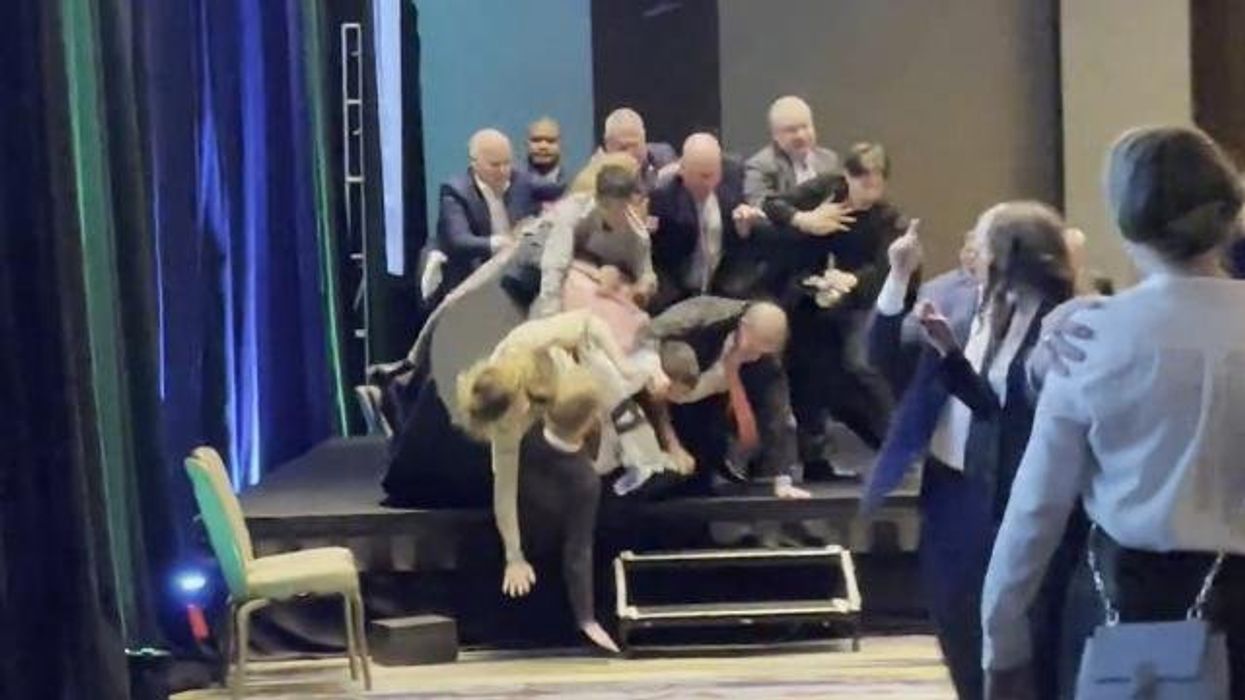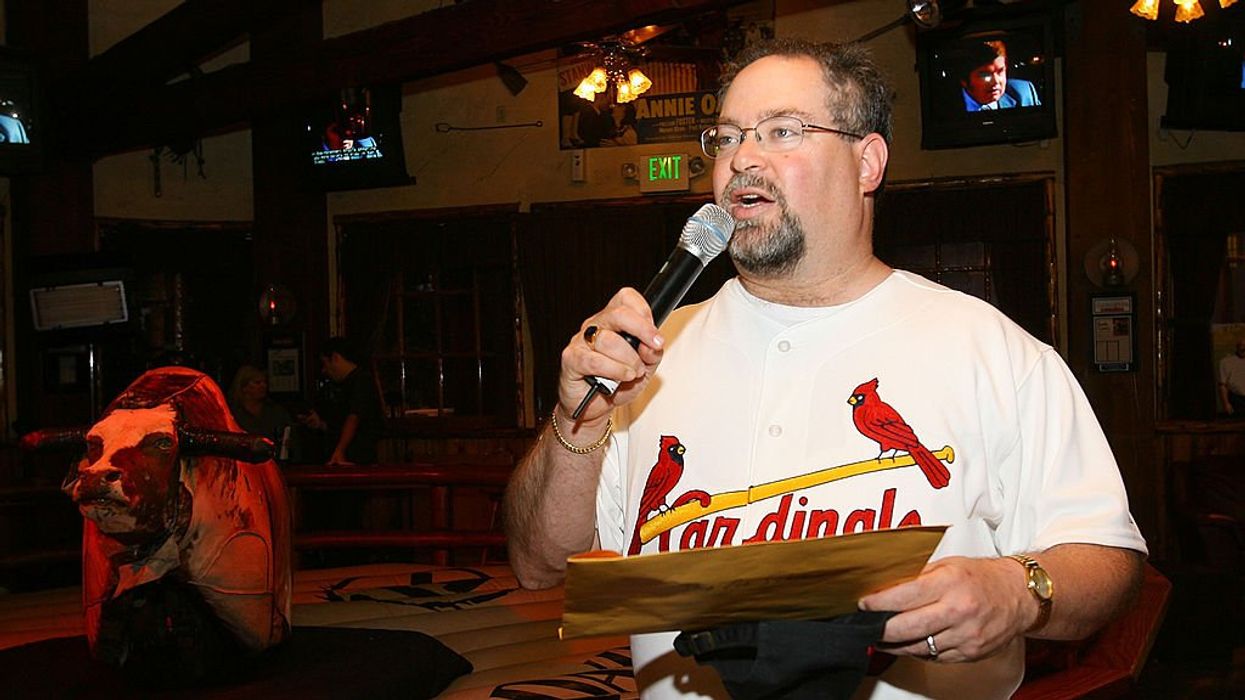
© 2024 Blaze Media LLC. All rights reserved.
Let's Set The Record Straight: 5 Common Misconceptions About Guns & Mass Shootings
January 14, 2013
 Noted gun control advocate New York City Mayor Michael Bloomberg has urged President Obama to get serious about firearm laws in the wake of the Sandy Hook massacre (Getty Images)
Noted gun control advocate New York City Mayor Michael Bloomberg has urged President Obama to get serious about firearm laws in the wake of the Sandy Hook massacre (Getty Images)
Following the terrifying events in Newtown, Conn., that left 26 people dead -- including 20 children -- the nation has turned its attention to the topic of guns and gun control.
Considering the fact that Adam Lanza’s murderous rampage occurred just five months after James Holmes stormed a theater in Aurora, Colo., shooting 70 people and killing 12, it seems that the nation, to a certain degree, is determined to speak more frankly about guns and gun-related violence and debate what should be done.
However, this is where we get into an odd area.
It appears that the gun control debate is being dominated by bad information and that the chance for thoughtful and meaningful dialogue -- let alone solutions -- is being lost.
For instance, in what appears to be an attempt by one side to push for stricter gun laws, there is a wealth of misinformation out there regarding semi-automatic rifles. One side argues semi-auto rifles are the real root of the problem, the other side would like a focus on safety and mental health.
However, if U.S. lawmakers are actually going to enact laws aimed at semi-automatic rifles (or "scary looking" semi-automatic rifles, as Glenn Beck has pointed out), the legislation should be based only on the best and most accurate data. Unfortunately, much of what’s being said today about semi-automatic rifles is either misleading or flat-out untrue.
So what’s the truth behind those so-called “assault weapons"?
We’re glad you asked. In order to answer some of these gun-related questions, TheBlaze consulted with the experts at Daniel Defense, a Georgia-based group that specializes in providing “small arms product solutions to our Military and Law Enforcement community” with “innovative engineering and our state of the art manufacturing facility.”
In a debate on gun control involving technical and historical questions on firearms, we thought it would be best to involve those who have dedicated their careers to understanding firearms. Similarly, if we were discussing legislation that proposed to confiscate, say, all Gibson Les Paul Recording models from U.S. guitar players, we’d ask a professional luthier about the guitar, not a politician.
 Please, Sen. Feinstein, this is gun safety 101: Always keep the gun pointed in a safe direction and take your finger off the trigger unless prepared to fire (Photo: Dennis Cook/AP).
Please, Sen. Feinstein, this is gun safety 101: Always keep the gun pointed in a safe direction and take your finger off the trigger unless prepared to fire (Photo: Dennis Cook/AP).
So, in an attempt to wrap our minds around the current debate on gun control, TheBlaze and Daniel Defense worked to identify the five most common misconceptions regarding semi-automatic rifles and mass shootings in the U.S.
1. Don't confuse military and civilian-style rifles
Focusing specifically on the difference between M-16s and AR-15s (i.e “the most popular rifle in America”), TheBlaze’sLiz Klimas covered this exact topic in great detail last week.
“Kelly Alwood, a firearms trainer and consultant, told TheBlaze the only difference [between the civilian AR-15 and the M-16] is that one is fully automatic and the other is semi-automatic,” Klimas writes.
“It’s a small yet simultaneously big distinction. Firearms for use by the military are able to shoot continuously with one pull of the trigger, machine-gun style. Civilian firearms, on the other hand, only allow one shot per trigger pull,” she adds.
Daniel Defense chimes in on the distinction between military and civilian-style weapons: “The Firearms Owners Protection Act banned the manufacture of fully automatic guns in the United States in 1986 with the exception of military and law enforcement purposes.”
“AR-15s that are currently being manufactured for the civilian markets are semi-automatic, which means only one projectile is fired with each trigger pull,” explains Jordan Hunter, Director of Marketing for Daniel Defense.
“This puts them functionally in the same category with greater than 50 percent of all guns sold in the United States in 2012,” he adds.
However, if we didn’t know better, many of those who support stricter gun laws don’t seem to understand that rifles such as the AR-15 are not a fully automatic weapon and they are not military-grade “assault weapons.”
“It was the Left who needed a term to call them,” Glenn Beck said on radio last Thursday. “They are trying to make you think …’an AR-15, nobody needs that.’ An AR-15 is just a rifle, unless it has a fully automatic switch on it and then it becomes a machine gun -- and you can’t buy that.”
“It’s a way to demonize something for a political agenda and misconstrue [the guns] and the public on the Second Amendment,” Alwood told Klimas.
2. Will a ban on AR-15s or similar rifles put an end to mass shootings and violent gun crimes?
“An ‘assault weapons’ ban will not end mass shootings or stop mentally unstable and/or criminals from committing violent acts,” Hunter told TheBlaze in an email. “The type of firearm is of little consequence when in a bad guy’s hand and we must look at other ways to prevent violent acts.”
Indeed, whether for good or bad, as long as the person holding the firearm knows what they’re doing, the damage can be devastating.
In the hands of an expert, here’s what a revolver can do:
And a pump-action shotgun:
And a semi-automatic handgun:
“We tracked 62 mass shootings wherein 5 or more people were either shot or killed from the early 1980’s to now; 41 times pistols were used, 12 times shotguns or some type of hunting-styled rifle was used, and 9 times semi-automatic rifles were used (14 percent),” Hunter told TheBlaze.
“Of the 62 incidents that we were able to track, 42 of the shooters had some kind of mental illness or mental illness history of some kind, 16 of the shooters had unknown or unclear history of mental illness, and only 4 of the shooters had no mental illness history.
“Chicago, Illinois, has some of the country’s strictest gun laws, and because of this, some might think that it should be one of the safest cities in the America. However, in 2012, 1.5 people were killed every day after being shot by a bad guy with a gun. That makes 532 people killed in 2012 alone,” he adds.
3. Do mass murderers usually use guns?
News flash: Psychopaths will use whatever they can to inflict pain on people. Consider the following:
- March 25, 2008, Sitka, Alaska: An 18 year killed 4 people with a 5-inch knife.
- June 8, 2001, Osaka, Japan: A school janitor killed 8 children with a kitchen knife.
- July 1, 2008, Shanghai, China: A man stabbed 6 police officers to death and wounded 4 others with a knife.
“According to the FBI’s website, during the time period between 2007 until 2011, there were 8,967 people that were murdered with knives or cutting instruments; during that same time period, there were 3,918 people that were murdered with either rifles or shotguns,” Hunter told TheBlaze.
And, of course, murderers aren’t restricted to just sharp objects and guns. Some have used explosives:
- April 19, 1995, Oklahoma City, Okla.: Timothy McVay murdered 168 people and injured 680 when he blew up the Alfred P. Murrah Federal Building using, among other components, fertilizer.
- May 18, 1927, Bath, Mich.: A man murdered 44 people, 38 of which were elementary school children. Another 58 were wounded when he blew up the Bath Consolidated School. To date, this is still the worst school massacre in US history.
- November 1, 1955: John “Jack” Gilbert Graham murdered 44 people by planting a dynamite bomb in his mother's suitcase that was subsequently loaded aboard United Airlines Flight 629. The bomb detonated shortly after takeoff.
Others transportation:
- September 11, 2001: Nineteen terrorists murdered nearly 3,000 people on American soil by intentionally flying passenger planes into the North and South towers of the World Trade Center complex in New York City and the Pentagon in Arlington, Va. A fourth plane was also hijacked and was intended to be crashed into the U.S. Capitol, but passengers overcame the hijackers and the plane crashed in Shanksville, Pa.
- June 8, 2008, Tokyo, Japan: A man drove his truck into a crowd of people, killing three. He then exited the vehicle and stabbed 12 people. In all, seven people were killed as a result.
- April 30, 2009, Apeldoorn, Netherlands: A man intentionally drove his car into a group of people amassed for a parade. He killed six and seriously injured another 12 before dying from the crash himself.
Others blunt objects:
- August 6, 2004, Deltona, Fla.: Four men decided to bludgeon 6 people using baseball bats because they wanted to steal an Xbox belonging to one of the victims. All of the attackers were old enough to buy firearms.
- July 20, 2009, Sydney, Australia: A family of 5 was bludgeoned to death as they slept. Most likely baseball bats were used in the attack.
“According to the FBI’s website, during the time period between 2007 until 2011, there were 2,918 people that were murdered with blunt objects (baseball bats, hammers, etc.),” Hunter reminds us. “During that same time period, there were 1,874 people that were murdered with rifles.”
4. What's the point of the Second Amendment anyway?
 “A well-regulated Militia, being necessary to the security of a free State, the right of the people to keep and bear Arms, shall not be infringed.” -- House Resolutions and Articles of Amendment; August 24, 1789. (Getty Images)
“A well-regulated Militia, being necessary to the security of a free State, the right of the people to keep and bear Arms, shall not be infringed.” -- House Resolutions and Articles of Amendment; August 24, 1789. (Getty Images)
“The Bill of Rights was introduced by James Madison and adopted in 1789, later ratified in 1791. Our forefathers witnessed firsthand what an oppressive government was capable of, and because of that, they planned and participated in the overthrow of that oppressive government,” Hunt explained to TheBlaze in an email.
“Those great men, our forefathers, carefully crafted The Bill of Rights with the hopes of protecting the personal freedoms of America’s citizens while limiting the power of their government.
“Contrary to some of our current politicians’ rhetoric … the Second Amendment was not intended to protect hunting rights, nor does the Second Amendment make any mention of a list of firearms that cannot be owned, as Senator Feinstein has proposed.
“In fact, the Second Amendment was clearly designed with the mindset of protecting America’s citizens from people like Senator Feinstein: government officials, who want to impose their own will on the citizens of this country by any means necessary. The Second Amendment gives the American citizens the right to own firearms in order to protect themselves, their family, their property, their freedoms, and the idea that this country’s government is ‘of the people, by the people and for the people’ of this country,” he adds, citing a notable quote from American statesman Daniel Webster:
We may be tossed upon an ocean where we can see no land — nor, perhaps, the sun or stars. But there is a chart and a compass for us to study, to consult, and to obey. The chart is the Constitution
5. Maybe we don’t have enough gun laws
“Another gun law isn’t the answer,” Hunter flatly states. “Nationally, there are currently 243 pages of federal gun laws and 480 pages of state gun laws in effect.”
Bet you didn’t know that.
“Criminals and mass murders are not law-abiding citizens. Regardless of what the law states, what the consequences may be, it will not prevent a would-be thief, a predator, or a murderer from breaking every law imaginable while in the process of committing a crime. A law-abiding citizen obeys the law; a criminal does not.
“In a private school, it is the private school’s responsibility to protect children who are not old enough to protect themselves. However, in a government school, it is the government’s responsibility to protect children who are not old enough to protect themselves from murderers. Our government officials may be pointing their finger at guns in order to take responsibilities off themselves for what they have failed to do,” he adds.
--
So there you have it.
That’s Daniel Defense’s contribution to the nation’s ongoing gun control debate. Hopefully, now that we have some of the misinformation cleared up, we can go forward with responsible, practical, and effective plans for preventing further gun-related tragedies.
Follow Becket Adams (@BecketAdams) on Twitter
Featured image courtesy Getty Images.
Want to leave a tip?
We answer to you. Help keep our content free of advertisers and big tech censorship by leaving a tip today.
Want to join the conversation?
Already a subscriber?
more stories
Sign up for the Blaze newsletter
By signing up, you agree to our Privacy Policy and Terms of Use, and agree to receive content that may sometimes include advertisements. You may opt out at any time.
© 2024 Blaze Media LLC. All rights reserved.
Get the stories that matter most delivered directly to your inbox.
By signing up, you agree to our Privacy Policy and Terms of Use, and agree to receive content that may sometimes include advertisements. You may opt out at any time.






